Facilities
The research groups of Science for Life house advanced technological infrastructures.
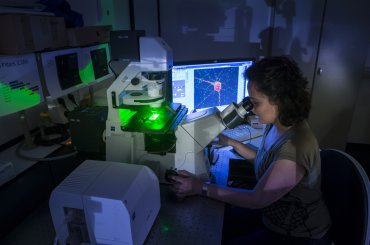
Light microscopy
The Biology Imaging Center is hosted by the Cell Biology group of the Department of Biology and provides access, support and training in advanced light and fluorescent microscopy techniques for research groups within the department of Biology and also to groups from other institutes within and outside Utrecht. By organizing courses and individual training, the Imaging Center is strongly involved in teaching microscopy techniques to Bachelor and Master students participating in different Life Science programs in Utrecht at different levels. Another important activity of the Imaging Center is development of custom imaging methods and image analysis algorithms and making them accessible to scientific community.
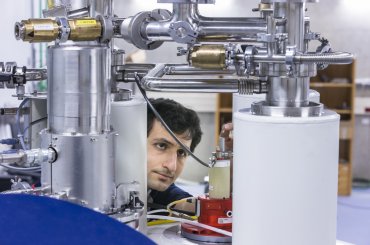
NMR
The SON NMR Large-Scale Facility is hosted by the NMR Spectroscopy group of the Bijvoet Center for Biomolecular Research and was established in 1993. It provides access to state-of-the-art solution state as well as solid state NMR equipment to both Dutch and international researchers. In addition to the NMR machine park, SONNMRLSF harbors an extensive computational infrastructure for Molecular Modelling, NMR structure calculations and docking simulations. The facility can also provide advanced training of young scientists.
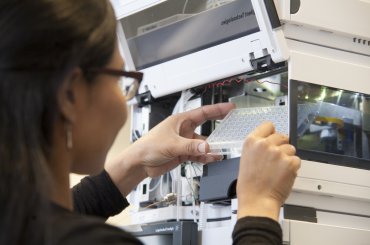
Mass Spectrometry
Since 2004, the Biomolecular Mass Spectrometry and Proteomics Group has formed the core of the Netherlands Proteomics Centre (NPC) a strategic collaboration of proteomics research groups throughout the Netherlands. At Utrecht University, access is provided for large scale proteomics experiments as well as native MS for structural analysis of proteins and protein complexes. Access is provided to 20 state-of-the-art high resolution mass spectrometers, including 6 Orbitraps (of which 4 Exactive and Q-Exactive Orbitraps) and 7 Q-ToF mass spectrometers. Starting 2014, the NPC provides access through the NWO Roadmap project Proteins At Work.
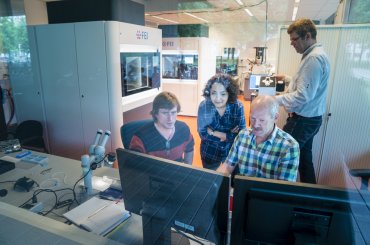
Electron microscopy
The facilty for electron microscopy is hosted by the Cryo-EM group and is devoted to the development and application of technologies for (cryo) specimen preparation, 3D (cryo) electron microscopy data collection, as well as image analysis for cell biology and material sciences applications. The facility offers the tools and technical expertise for training beginners and advanced users in electron microscopy on the available electron microscopes. The lab operates 6 electron microscopes (2 scanning and 4 transmission electron microscopes) and the ancillary equipment needed for preparation of specimens (either from material sciences, geology, medicine or biology) for EM and other microscopy. Users of the facility can opt for full technical services in microscopy so that they are provided with whatever micrographs and analyses they want for given specimens, or they can work independently on the facility’s microscopes, specimen-preparation equipment, and computer facilities after following appropriate training by the facility staff.
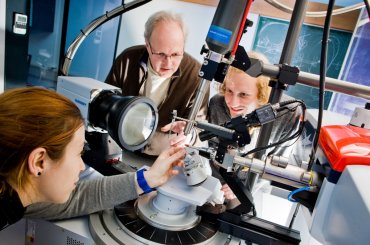
X-ray crystallography
The National Single Crystal X-ray Facility in the Crystal and Structural Chemistry group offers crystal structure determinations to synthetic chemists at universities, institutes and companies in The Netherlands. With experienced staff, state-of-the-art equipment and advanced software we are able to handle a large variation of chemical compounds. In academic collaborations we contribute significantly to the preparation of scientific publications. Examples of our structural studies include model systems that mimic catalytic sites in proteins or synthetic catalysts to be used in the clean production of desired pharmaceuticals or materials. Such studies are necessary for a detailed understanding of the catalytic process at the molecular level. Similarly, crystal structures of pharmaceuticals are studied to obtain experimental evidence of molecular conformations, intermolecular interactions, absolute configuration, polymorphs and details of solvent inclusions. This information is needed as guidance to develop better pharmaceuticals. Supramolecular structures of self-organizing molecules through intermolecular interactions are studied as part of research aiming at the development of desired new materials.
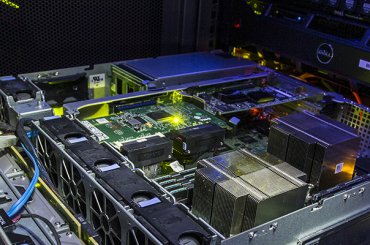
Utrecht Bioinformatics Center (UBC)
The UBC brings together Utrecht-based research groups each with a varied area of bioinformatics expertise, providing education for our life scientist of the future. By coordinating the High Performance Compute facility UBC provides access to a solid facility to compute the increased amount of data generated, for eighteen different research groups from UMC Utrecht, Utrecht University and the Hubrecht Institute.

Research Facilities and Services Utrecht Life Sciences
A complete overview of all Research Facilities and Services of Utrecht Life Sciences.

